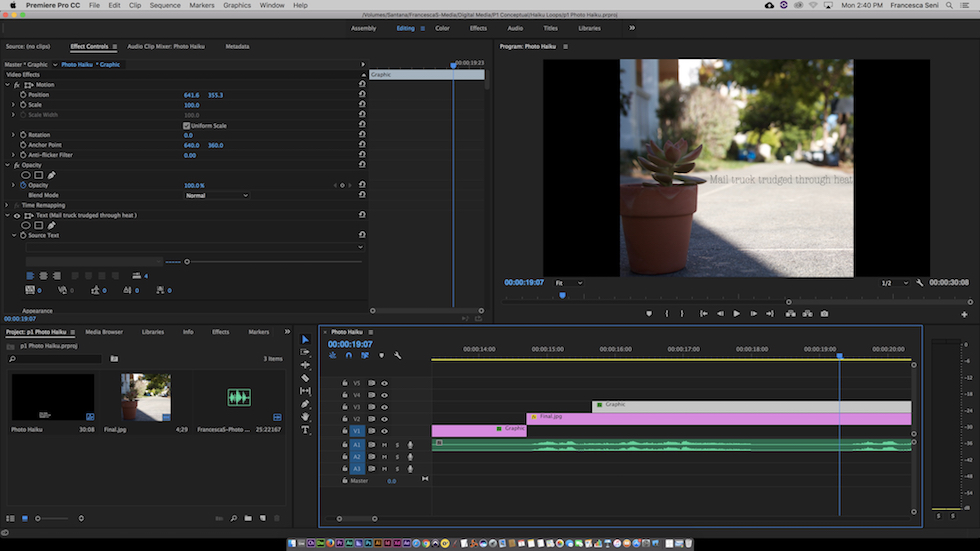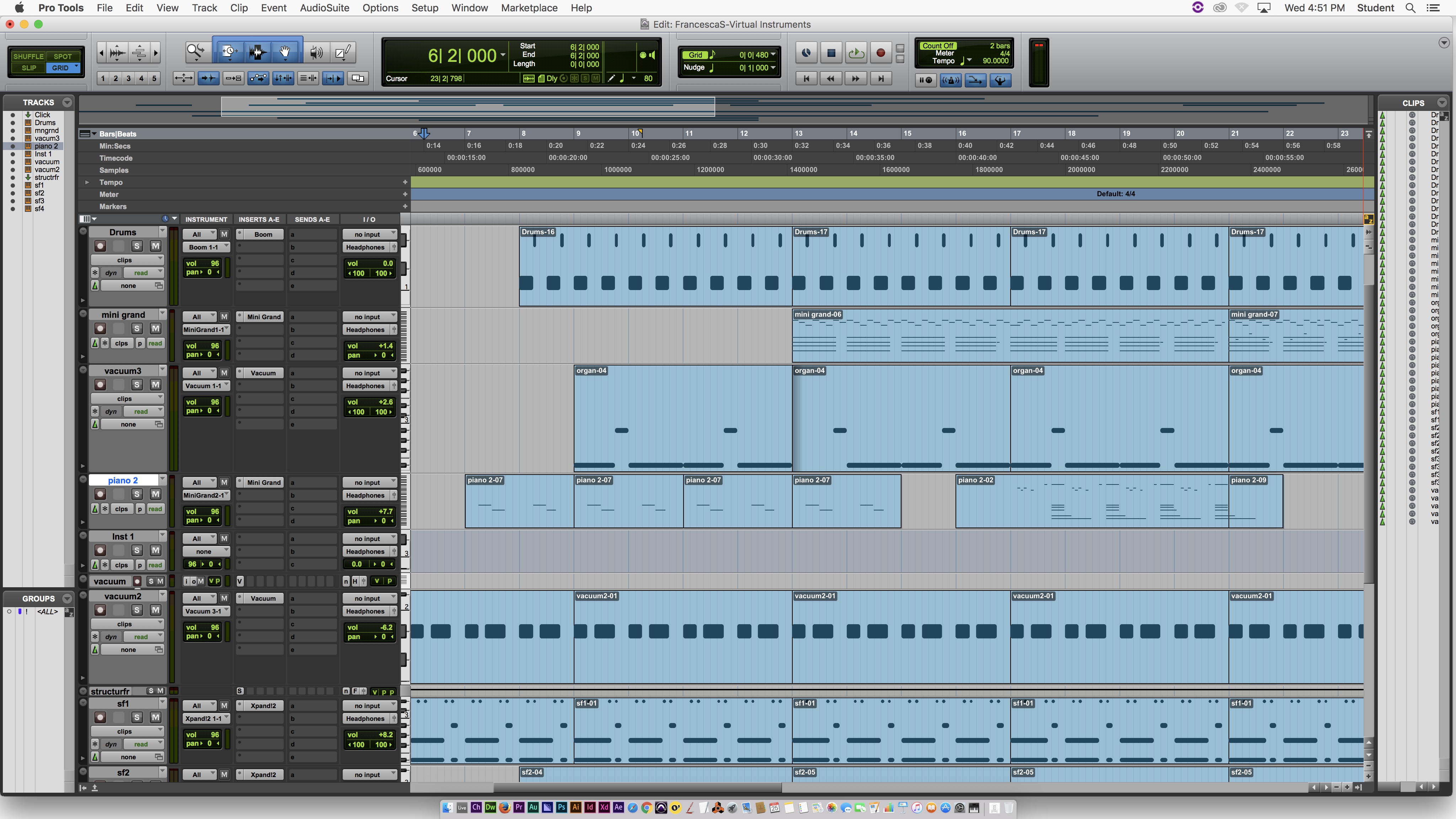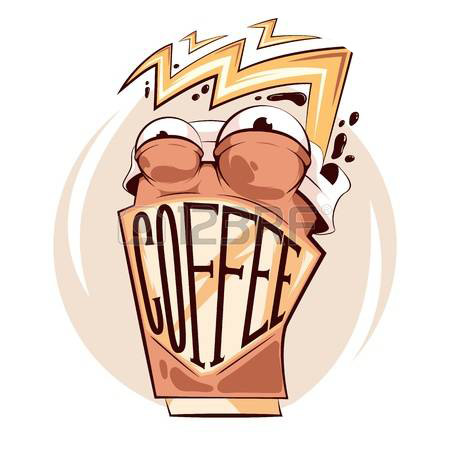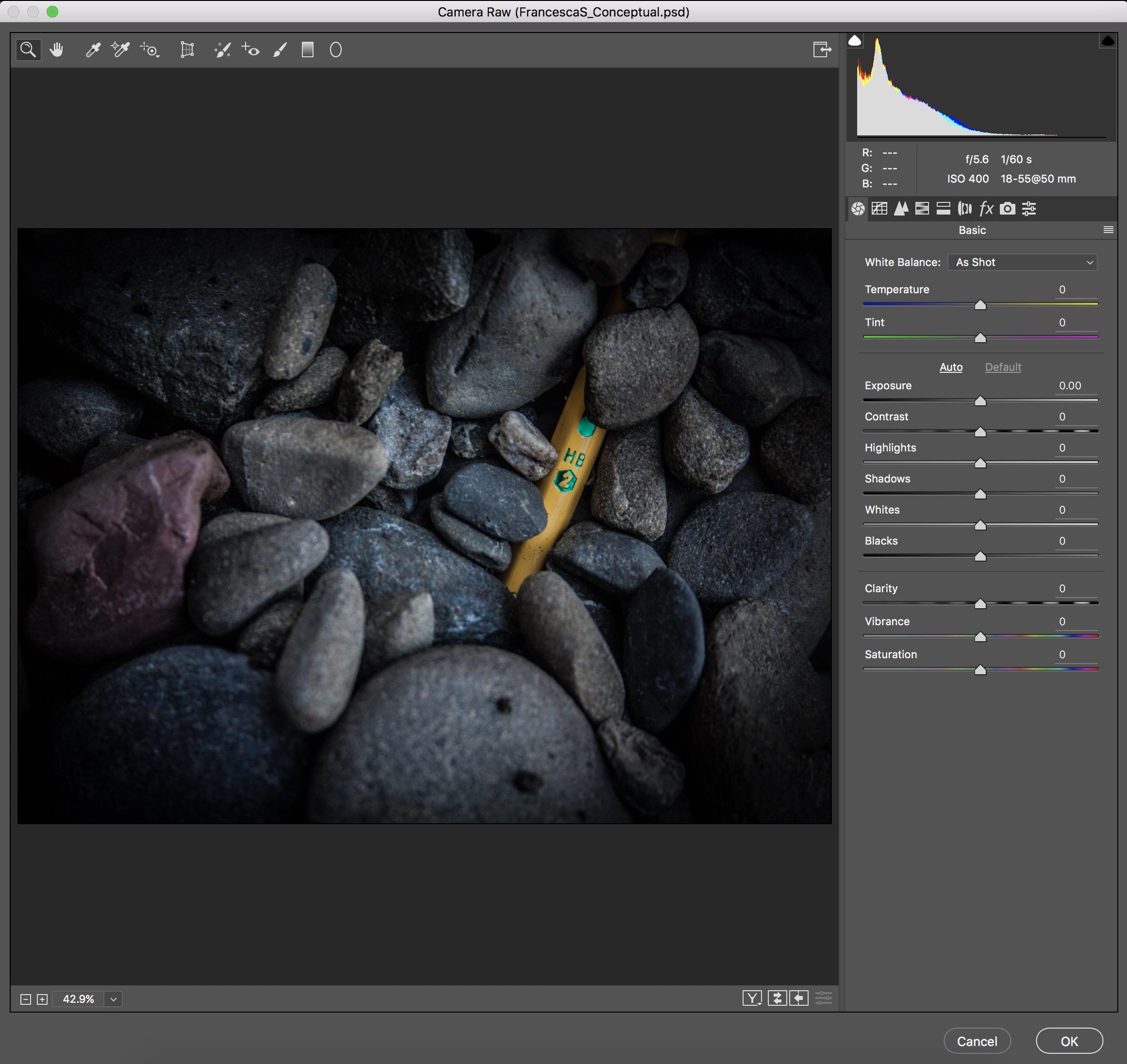The Conceptual Project's purpose was to introduce new students into a different way of thinking. Conceptual art relies heavily on metaphors which can be interpreted in countless different ways. Everyone will interpret something differently, so the goal of of conceptual art is not necessarily to convey one idea, but to make the viewer feel something. Even so, the artist will have an idea in mind which requires a lot of depth and definition. In all of our classes we were given the task to truly think outside the box. We had to get away from literal interpretations and cliches and find meaning in symbols that spoke to us. In English class, we read about conceptual artists in the play Red. We also wrote our own poetry, mainly based off an assigned conceptual statement. We'd then go into our elective class and further elaborate the idea of our poetry. In Digital Media, we created accompanying videos with music, images, and text that all contributed to the conceptual statement. The images especially were a challenge, because they had to be an additional metaphors. In Design, we learned the main principals of design that lead up to a photography project based again on the conceptual statement.
For me, the best part of the Conceptual Project was finding the line between pretension and deep. I had a hard time identifying a meaning in some modern art, but in the end, I learned a lot about what's behind the paint, and how to see, not just look. This meant discovering our own interpretations of conceptual art, and finding metaphors that's weren't too literal or extreme. It required a fresh perspective of thinking that is hardly ever found in our regular classes. The poetry unit was specifically helpful to learn the basics of Adobe applications in Digital Media, and to learn to think in a new way in my English and Design classes.
The poetry unit began with Haikus, but we soon ventured into several different types of poems including free verse, spoken word, and ekphrastic. My particular favorite was the ekphrastic poem, in which the author writes a poem reacting to a certain piece of art. We each chose a piece of art to react to that was exhibited at the SF MOMA. I had never done an ekphrastic poem, and I believe that most people don’t get the chance to in regular english classes. This activity gave me more appreciation for Freestyle and the outside-the-box thinking process they encourage. My poem was simply paired with a picture of the piece, and a small description of the artist.
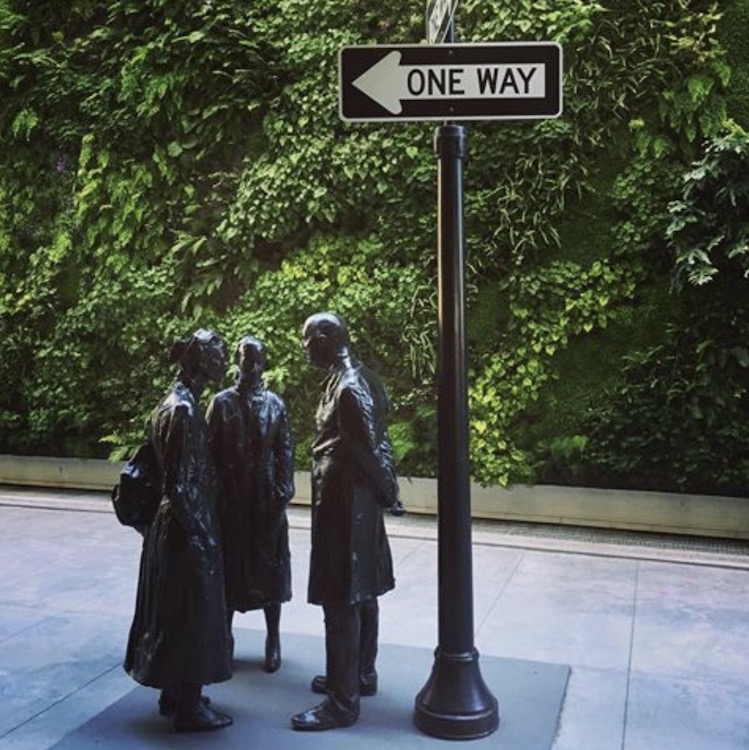

One Way:
Jagged nose and
Protruding chin.
Thick black glasses and
Hair pulled back tightly.
Slender, small face and
A lift from the floor.
Separate souls
Searching for the right way to go.
Crossing courses,
Clueless as to where to go next.
Each
with their own idea of where to go.
They meet,
Unexpectedly.
In a Chance Meeting-
I wish I could join.
The Free Verse poem was also based on the given concept statement from English class. My concept statement was, "I'm exploring the feeling of remorse through the experience of managing responsibilities". My free verse poem went through multiple drafts, the end product following a completely different structure and idea than the original. After polishing the poem, I went into Digital Media and used the Adobe application PremierePro to put together a video for it. The background music was put together in Protools by stringing together and layering different clips of music provided to me, and then changing dynamics and even lengths of certain notes. I exported the music and put it together with text and images in PremierePro. The video's images are all metaphorical representations of my word choice in the poem. We also used the Ken Burns affect in the video, meaning that the point of view pans through the image as time passes.
This poetry unit was unlike others that I had taken in regular English classes of years past. We dove much further into specific literary devices that poets use in order to convey a message. We also implemented many of them into our own writing, adding a layer of sophistication to my writing that was not there before. It was also quite challenging to write multiple pieces based on the same concept statement mentioned above. This ended up being a very engaging exercise, making it so each of us had to come up with intricate metaphors.
The spoken word poem was the only poem that did not require being based off the concept statement. We had the opportunity to present in class, but were not forced like in years past. Instead, we moved the art form of presentation into video. In Digital Media, we used different tools in the application PremierePro to highlight significant words in the poem.
